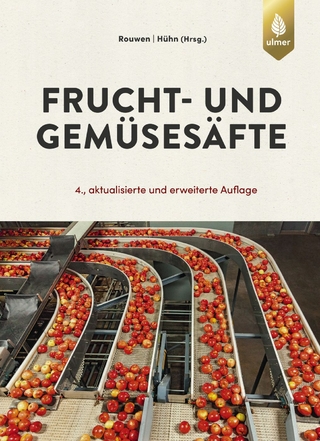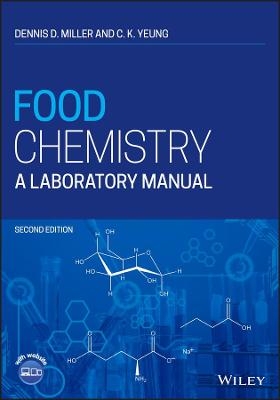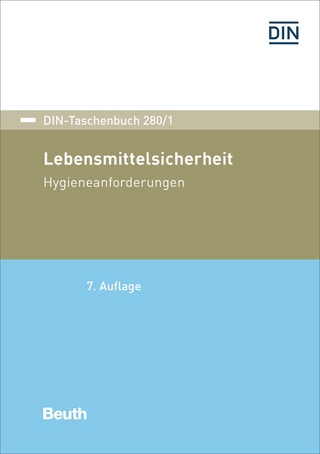
Handbook of Food Science and Technology 1
ISTE Ltd and John Wiley & Sons Inc (Verlag)
978-1-84821-932-8 (ISBN)
The authors' main focus is on the biological and physical-chemical stabilization of food, and the quality assessment control methods and normative aspects of the subsequent processes.
Presented across three parts, the authors offer a detailed account of the scientific basis and technological knowledge needed to understand agro-food transformation. From biological analyses and process engineering, through to the development of food products and biochemical and microbiological changes, the different parts cover all aspects of the control of food quality.
Romain Jeantet is Deputy Director at the STLO joint research unit INRA-Agrocampus Ouest, as well as Professor at Agrocampus Ouest in Rennes, France. His research focuses on food engineering with a special interest in dairy products. Thomas Croguennec is Professor at Agrocampus Ouest in Rennes, France as well as a Research Scientist at STLO, with research focused on physical chemistry and dairy technology. Pierre Schuck is a research engineer and Partnership Officer at STLO INRA in Rennes, France. He has extensive experience in the dairy industries and his research has largely focused on concentration and drying. Gérard Brulé was Professor Emeritus at Agrocampus Ouest in Rennes, France before he retired in 2010.
Introduction ix
Gérard BRULÉ
Part 1. Water and Other Food Constituents 1
Chapter 1. Water 3
Pierre SCHUCK
1.1. Structure and state of water 3
1.2. Properties of water7
1.2.1. Water activity (aw) 8
1.2.2. Glass transition 19
1.2.3. Phase diagram 25
Chapter 2. Other Food Constituents 27
Thomas CROGUENNEC
2.1. Carbohydrates 27
2.1.1. Structure of carbohydrates 28
2.1.2. Carbohydrates in solution 30
2.2. Proteins 36
2.2.1. Structure of proteins 36
2.2.2. Solubility of proteins 38
2.3. Lipids 41
2.3.1. Composition of the lipid fraction 41
2.3.2. Thermal properties of lipids 47
2.4. Vitamins 51
Part 2. Food Modifying Agents and Mechanisms 53
Chapter 3. Microbial Spoilage 55
Florence BARON and Michel GAUTIER
3.1. Microbial profile of food 55
3.1.1. Origin of microorganisms 55
3.1.2. Factors influencing the growth of microorganisms 66
3.2. Food spoilage 78
3.2.1. Changes in texture and structure 79
3.2.2. Changes in flavor 80
3.3. Sanitary risks 82
3.3.1. Foodborne disease outbreak 82
3.3.2. Main pathogens and toxin producers 86
Chapter 4. Lipid Oxidation 99
Thomas CROGUENNEC
4.1. Lipid substrates 100
4.2. Lipid oxidation mechanisms 100
4.2.1. Lipid autoxidation 101
4.2.2. Lipid oxidation by singlet oxygen 106
4.3. Main compounds derived from lipid oxidation 108
4.4. Factors affecting lipid oxidation 110
4.4.1. Oxygen content 111
4.4.2. Catalysts of lipid oxidation 112
4.4.3. Inhibitors of lipid oxidation 116
4.4.4. Physical-chemical factors 119
4.5. Evaluation of susceptibility to oxidation and the level of oxidation 122
4.5.1. Measuring the consumption of oxidation substrates 124
4.5.2. Determination of the peroxide value 124
4.5.3. Measurement of peroxide decomposition products 126
4.6. Control and prevention of lipid oxidation 126
4.6.1. Stabilization using physical means 128
4.6.2. Formulation 129
Chapter 5. Non-Enzymatic Browning 133
Thomas CROGUENNEC
5.1. Substrates 134
5.2. Mechanism of non-enzymatic browning 135
5.2.1. Condensation 136
5.2.2. Amadori or Heyns rearrangement 137
5.2.3. Degradation of ketosamines 138
5.2.4. Polymerization reactions 144
5.3. Factors influencing the Maillard reaction 145
5.3.1. Substrates 145
5.3.2. Physical-chemical conditions 147
5.3.3. Presence of activators and inhibitors 149
5.4. Consequences of non-enzymatic browning 149
5.4.1. Sensory consequences 150
5.4.2. Functional consequences 150
5.4.3. Nutritional consequences 151
5.5. Evaluation of non-enzymatic browning 152
5.6. Control and prevention of non-enzymatic browning 153
5.6.1. Removal of substrates 154
5.6.2. Physical-chemical factors 155
5.6.3. Formulation (addition of inhibitors) 155
Chapter 6. Enzymatic Browning 159
Thomas CROGUENNEC
6.1. Substrates and browning enzymes 160
6.1.1. Phenolic substrates 160
6.1.2. Browning enzymes 165
6.2. Mechanism of enzymatic browning 167
6.2.1. Formation of quinones 167
6.2.2. Reactions with quinones 167
6.3. Factors influencing enzymatic browning 169
6.3.1. Substrates 169
6.3.2. Physical-chemical conditions and presence of natural inhibitors 170
6.4. Consequences of enzymatic browning 171
6.5. Evaluation of enzymatic browning 174
6.6. Control and prevention of enzymatic browning 175
6.6.1. Denaturation or inhibition of polyphenol oxidase 175
6.6.2. Modification or removal of oxidation substrates 177
6.6.3. Control of reaction products 179
Chapter 7. Molecular Dynamics in Food Matrices 183
Thomas CROGUENNEC and Pierre SCHUCK
7.1. Water migration and changes in food quality 184
7.1.1. Water migration 184
7.1.2. Equilibration with the atmosphere 185
7.1.3. Equilibration in heterogeneous foods 186
7.1.4. Equilibration after a phase and/or structure change 186
7.2. Control and prevention 190
7.2.1. Thermodynamic factors 190
7.2.2. Kinetic factors 191
Part 3. Quality Control and Assessment 195
Chapter 8. Food Safety Control 197
Florence BARON and Gérard BRULÉ
8.1. EU Legislation 197
8.1.1. Directive 93/43/EEC of June 14 1993 on the hygiene of foodstuffs 197
8.1.2. Food safety regulations 197
8.2. Tools 198
8.2.1. Guide to good practice 198
8.2.2. HACCP 199
8.2.3. Food safety and quality assurance management 204
Chapter 9. Evaluation of the Physical-chemical Properties and Quality of Food 205
Florence BARON, Gérard BRULÉ and Michel GAUTIER
9.1. Microbiological evaluation 206
9.1.1. Choice of microbiological assays 206
9.1.2. Methods 210
9.1.3. Limitations of microbiological evaluation 219
9.2. Biochemical and physicochemical analysis 220
9.2.1. Texture analysis by rheological methods 220
9.2.2. Color analysis 228
9.2.3. Analysis of food composition 230
Bibliography 235
List of Authors 245
Index 247
| Erscheinungsdatum | 31.01.2016 |
|---|---|
| Verlagsort | London |
| Sprache | englisch |
| Maße | 163 x 241 mm |
| Gewicht | 544 g |
| Themenwelt | Technik ► Lebensmitteltechnologie |
| ISBN-10 | 1-84821-932-6 / 1848219326 |
| ISBN-13 | 978-1-84821-932-8 / 9781848219328 |
| Zustand | Neuware |
| Haben Sie eine Frage zum Produkt? |
aus dem Bereich


